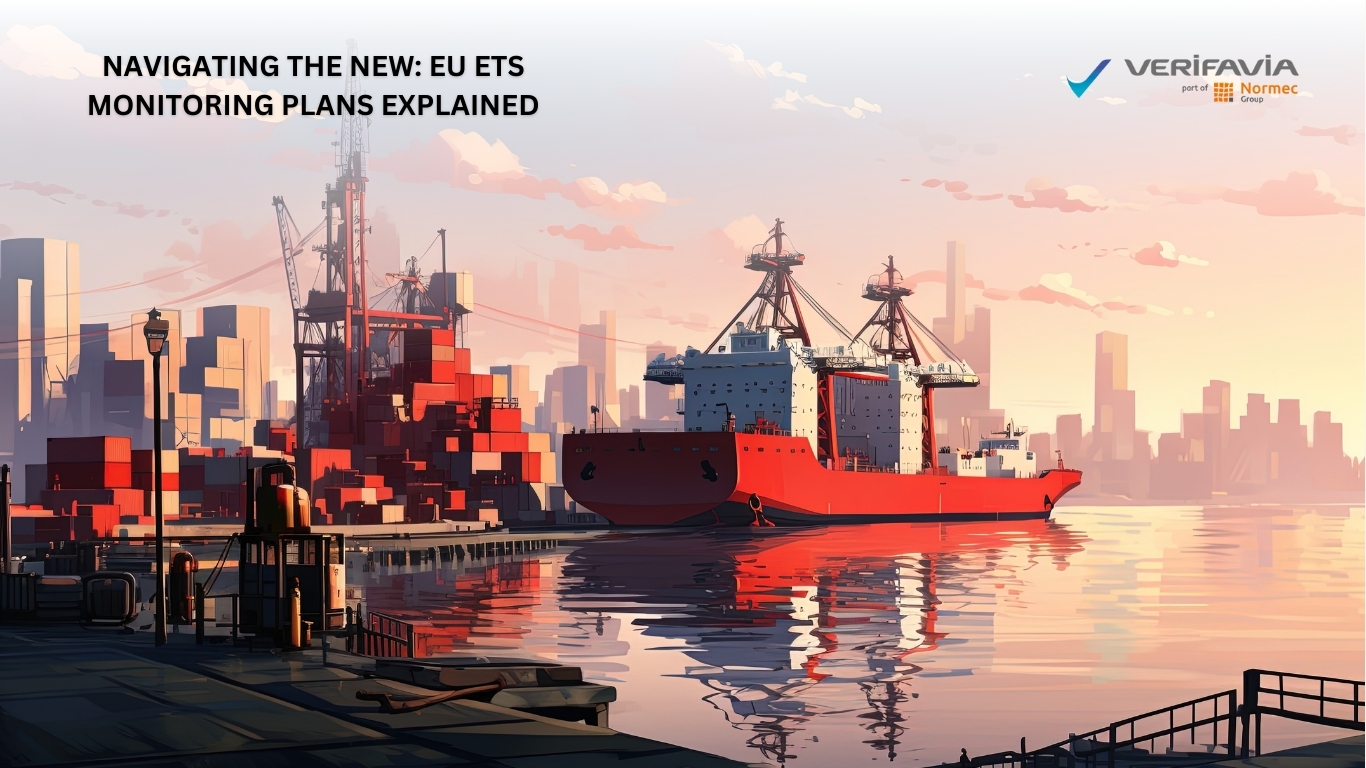A guide to streamlining GHG Emission Monitoring Plans in Compliance with recent EU Directives

Exciting developments are happening in the maritime industry. The European Commission has released a comprehensive list of shipping companies and their administering bodies. This move is aimed at simplifying operations and improving compliance with environmental regulations under Directive 2003/87/EC. For listed firms, this signals the start of a streamlined process to obtain a Marine Operator Holding Account, which is a crucial step towards efficiency and adherence to regulations.
Understanding Recent Updates in GHG Emission Monitoring Plans:
To effectively navigate the changes in monitoring plans for GHG emissions, shipping companies must address key aspects highlighted in the recent updates (Reg. 2015/757 Annex I and Commission Implementing Regulation (EU) 2023/2449):
1. Identification of the Ship and Shipowner:
- Ensure accurate representation of the country of registration and ICE class.
- Submit CSR and Certificate of Registry for relevant documents.
2. Company Information:
- Clearly define the nature of the company as per the ISM code.
- Provide supporting documents, including CSR.
3. Emission Sources and Fuel Types:
- Categorize emission sources and fuel types.
- Refer to the Commission Delegated Regulation for detailed guidelines.
4. Emission Factors:
- Adopt revised emission factors for methane and nitrous oxide.
- Ensure alignment with updated guidelines for all fuel types.
5. Slippage Coefficient:
- Clearly specify slippage coefficients for different fuel types.
- Refer to Annex I to Regulation (EU) 2015/757 for recommended coefficients.
6. Carbon Capture and Storage Technologies:
- Present supporting evidence for compliance with Directive 2003/87/EC.
- Clearly indicate the emissions source to which technologies are applied.
7. Procedures for Determining and Updating Emission Factors:
- Clearly define procedures, systems, and responsibilities.
- Document the methodology for compliance with conditions in Annex I.
8. Procedure for Determining CO2 Emission Factors:
- Clearly outline procedures for deriving CO2 emission factors.
- Specify compliance with relevant regulations for Recycled Carbon Fuel and Renewable Fuels.
9. Monitoring of GHG Emissions and Fuel Consumption:
- Include GHG emissions instead of just CO2 in the updated Monitoring Plan.
- Fill in "Emissions source reference No." and "Emissions source type" as reported in Table B.3.
10. Methods for Estimating GHG Emissions and Fuel Consumption:
- Specify and implement methods outlined in Table D.1.
- Perform calculations as per Annexes I to Commission Delegated Regulation.
11. Procedures for Data Flow Activities:
- Ensure a controlled data flow for monitoring and reporting GHG emissions.
- Provide a clear description of data flow through process flow charts.
- Submit company procedures incorporating MRV data flow.
12. Procedure for Risk Assessment:
- Conduct a comprehensive risk assessment.
- Establish an effective control system to mitigate risks.
- Make the risk assessment available to the administering authority and for verification.
Read more: Guidance for updating the Monitoring Plan
Key Action Steps for Shipping Companies:
As a shipping company, it is crucial to follow the latest guidelines and directives to ensure compliance. To help you navigate the necessary action steps, we have put together a comprehensive guide:
1. Verify Administering Authority: The first step is to check your assigned Administering Authority, as outlined in the Commission implementing decision (EU) 2024/411. This will help you understand your regulatory point of contact.
2. Revise Monitoring Plan: Keep up-to-date with the latest guidelines and regulations for GHG emissions. Regularly review and update your Monitoring Plan to align with the evolving standards.
3. Submission through THETIS: Use the THETIS platform for the seamless submission of your revised Monitoring Plan. This step establishes the foundation for effective emissions monitoring.
4. Engage Verifavia: Partner with Verifavia, a trusted verifier with a proven track record in decarbonization spanning over a decade. Request an in-depth review and assessment report of your Monitoring Plan through THETIS.
5. Administering Authority Approval: Upon submission, your Administering Authority will review the monitoring plan, associated documents, and assessment reports on THETIS. Ensure that your plan aligns with the latest guidelines and regulations. Once approved, this marks a significant milestone in the compliance journey, signaling that your plan meets the regulatory standards set by the European Commission.
Why Verifavia?
- An ISO 17029 accredited verifier (Accreditation provided by COFRAC)
- Over 10 years dedicated to decarbonization initiatives.
- Successfully verified emissions for 2000+ vessels in 2023.
- Assessed 2000+ monitoring plans, showcasing a broad range of expertise.
- A team of 50+ experts ensuring precision and adherence to industry standards.
Anmol Grace, Marketing Executive - Verifavia Back to all Industry News





